Deepa Bhasthi grew up in a very small town in Southern India, with mainly books to keep her company. But one day, when she was ten years old, Bhasthi’s father brought home a children’s magazine with penpals listed from all over the world: Asia, Europe, South America — and Deepa decided to write to two girls living in Russia. Bhasthi and her pen pals started sending lots of letters back and forth. And mostly they would write about the kinds of stuff you might expect: school, their families, their pets. But there was one thing that Bhasthi found these new penpals in Russia always wanted to talk about — Bollywood!

Bollywood is the Hindi-language film industry that comes out of Mumbai, India. It’s a portmanteau of “Bombay,” the former name of Mumbai where these films are produced, and “Hollywood.” Bollywood is often conflated with the Indian film industry as a whole, but really it’s just one very flamboyant slice of it. It’s usually packed with elaborate song and dance sequences, a fight between good and evil, a beautiful hero and heroine who end up happily ever after in the end.
What Bhasthi didn’t know at the time, was that Russian Bollywood fandom wasn’t unique to her childhood experience at all. From the 1950s right up to its collapse, people in the Soviet Union were completely infatuated with Indian cinema. India and the Soviet Union had completely different politics, languages, and cultures. But for a brief time, these two nations found they had much more in common than expected, and realized this through a love of movies.
The Most Important of All the Arts
In the early years of cinema, Soviet film directors were at the forefront of filmmaking, and not just within the USSR — but in the world. Vladimir Lenin himself said, “Of all the arts, for us, the cinema is the most important.” He believed that a film had the power to reach the masses better than any other artist medium and that it could operate as art and propaganda at the same time.
But when Joseph Stalin came to power, the scales tipped dramatically in favor of propaganda. The film industry was completely controlled by the state, and censorship was strictly enforced. As Stalin ascended to power, he enforced a new cultural policy on all arts produced in the Soviet Union.
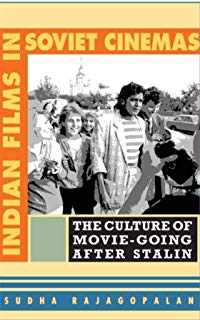
This cultural policy was called Socialist Realism. “You have the crystallization of a cultural policy that says that all cinema, and the arts, and literature, and everything else needs to follow a set of rules that highlights the goals of the revolution in a very specific way,” explains Sudha Rajagopalan, author of Indian Films in Soviet Cinemas: The Culture of Movie-going after Stalin. Socialist realism dictated that literature, music, theater, sculpture art, film, etc. must present communism and the ideals of a communist society in a positive light.
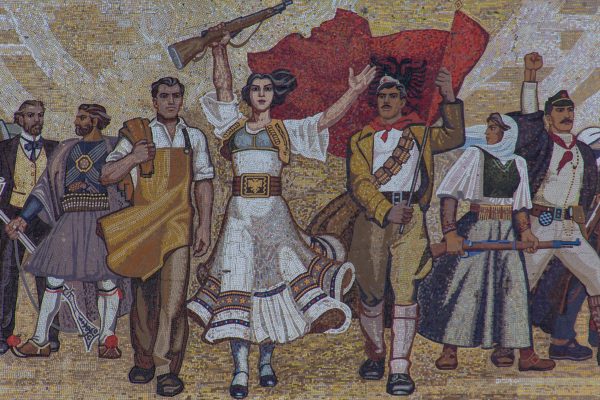
On top of socialist realism limiting artistic creativity, World War II hampered Soviet filmmaking even further. “A lot of the factories or a lot of the industries of cinema houses and theaters had to be closed down. The ones near the front had to be closed down,” says Rajagopalan. This was a time period where Soviet filmmaking suffered greatly.
Film critic and historian Kirill Razlogov explains that the war also caused a shift in the Soviet Union’s movie-making priorities. Rather than spending money on making a lot of movies a year, the Soviet Union wanted to concentrate on making a handful of well-produced films. The state wanted to focus on quality over quantity, but it was barely producing any films, and they weren’t the most entertaining.
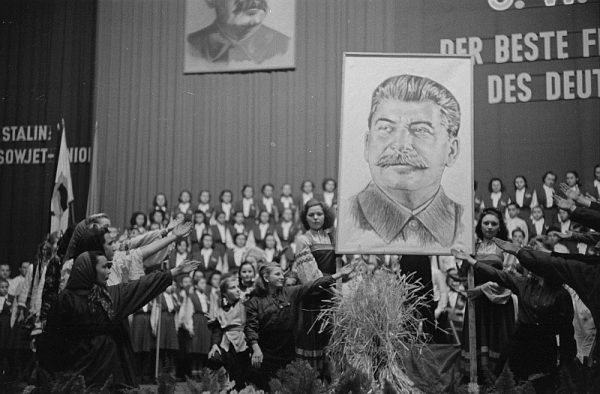
The Khrushchev Thaw
By 1953 that would finally begin to change with the death of Stalin. In 1953 Nikita Khrushchev succeeded Stalin as the secretary of the Communist Party and eventual Premier of the Soviet Union, and Khrushchev wanted to chart a new course forward for the nation. Khrushchev denounced Stalin’s “cult of personality” and kicked off a period known as the Khrushchev Thaw. Hundreds of thousands of prisoners were released from gulags, political repression subsided, and censorship was relaxed.
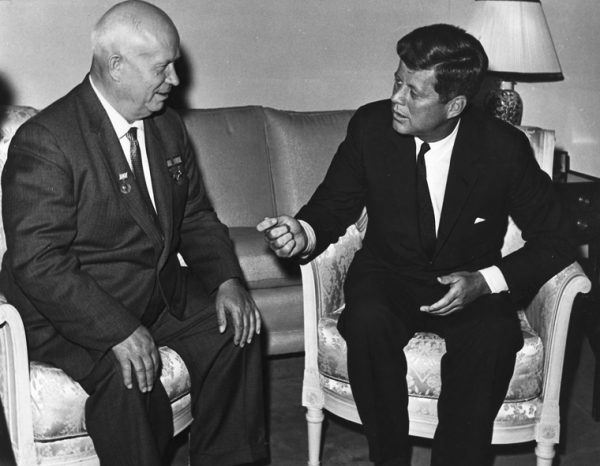
But Khrushchev also wanted to make ordinary citizens feel more free and happy in their daily lives. Khrushchev wanted to address the needs of everyday life and finally take the Soviet citizen’s wants into consideration. It also marked an important shift in the government’s priorities. And Krushchev decided that one way to ensure that Soviet people were having a good time, was to get them back into movie theaters.
But in order to get people to the movies, the USSR had to increase the number of films playing in theaters, which required importing more foreign films. The United States was the biggest movie producer at the time, but this was the middle of the Cold War, and the majority of Hollywood films were seen as overly bourgeois and materialistic. The USSR went looking for an ally who could help keep millions of fun-starved Soviets entertained without offending their political sensibilities. It found the perfect country in India.
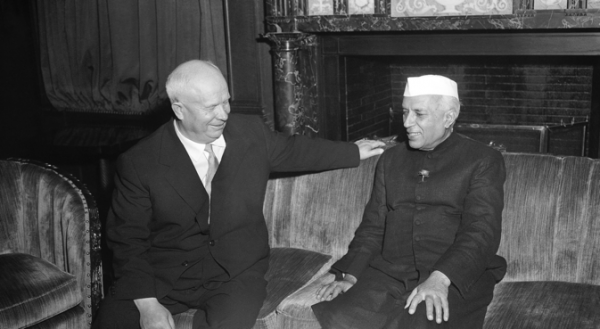
An Independent India
In 1947, after years of fighting British colonial rule, India became an independent nation. The Soviet Union, at the time, was looking to build relationships with developing countries, and even though India wouldn’t take an official side during the Cold War, it still looked like a promising candidate for friendship.
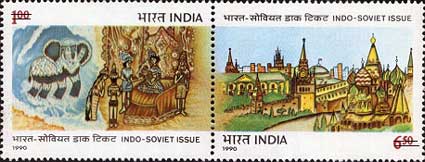
“It was a country that had very strong anti-imperialist politics and political sympathies among its intellectuals. And so both of these things made it actually a very attractive kind of site for the Soviet Union to try out its geopolitics,” explains Rajagopalan. The Soviet Union had a keen interest in developing relationships with post-colonial nations and having an ally in India (who was part of the Non-Aligned Movement) was something that could be very beneficial politically.
Both countries were incredibly diverse — both had multiple languages spoken across each country, underwent rapid industrialization, and had varying levels of literacy. In both India and the Soviet Union, cinema played a pivotal role in uniting an incredibly diverse population and creating a sense of national identity. Cinema served a medium in which both nations could find common ground and foster a growing political relationship.
Bollywood-mania
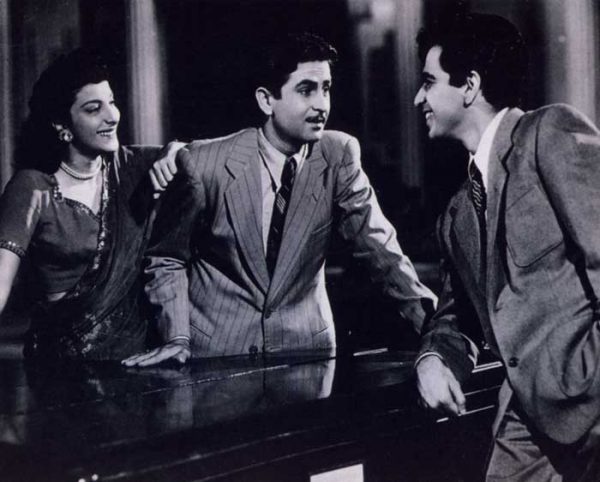
The idea was that this would be a cultural exchange between the two nations. The Soviet Union would import Indian films, and India would import the same number of Soviet films. The USSR could spread its cultural influence into India and fill movie screens within the USSR at the same time. In 1954, the Soviet Union took a big step towards this artistic partnership by hosting an Indian film festival in Moscow. “It was a huge event in the beginning of the 50s because of the Indian films came to Russia,” remembers Kirill Razlogov. The festival marked the debut of a Bollywood film in the USSR called Awaara, which translates to “the vagabond.” It was the highest grossing film in the Soviet Union that year selling over 63 million tickets.
Awaara and other Indian films became huge for Soviet audiences. After that first film festival in Moscow, the film’s star Raj Kapoor quickly became a huge celebrity throughout the Soviet Union. “Truck drivers had a photo of Raj Kapoor on their windshields next to Stalin,” recalls Anton Seyduzov, a former resident of Uzbekistan.
Raj Kapoor became a kind of cultural ambassador between the two countries. When he visited Moscow for the first time in 1956 he spoke about the ways in which movies could bring their countries closer together and even hearkened back to Lenin’s original vision of what cinema could accomplish.
At the peak of the Soviet Union’s Bollywood craze, the movie theaters were constantly showing Indian films, with at least half of the movie theaters playing Indian movies. Even the soundtracks to these films became popular. “Neighbors in the apartment complex at my family lived were playing Indian songs on their vinyls from 6:00 AM till practically midnight […] sometimes the same song over and over again,” says Seyduzov.
It’s hard to say exactly why Bollywood became such a phenomenon in the Soviet Union, but part of the reason is that they offered something you simply couldn’t find in Soviet films. “You do not see the kind of unbridled personal emotion that you see in Indian cinema,” explains Rajagopalan. Bollywood films are known for exaggerated and melodramatic displays of emotion and romantic love that you simply could not find in Soviet cinema. It was something different and exciting.
But it wasn’t just that Bollywood felt exotic and different. The exuberant sentimentality was certainly unfamiliar, but there was also something deeply relatable at the core of Indian cinema. Indian and Soviet films were both often about self-sacrifice, a world divided into good vs. evil, and class struggle. Rajagopalan conducted a number of interviews of Indian film fans in the former Soviet Union, and a lot of them pointed to something that we don’t quite have a word for in English — the “dusha.”
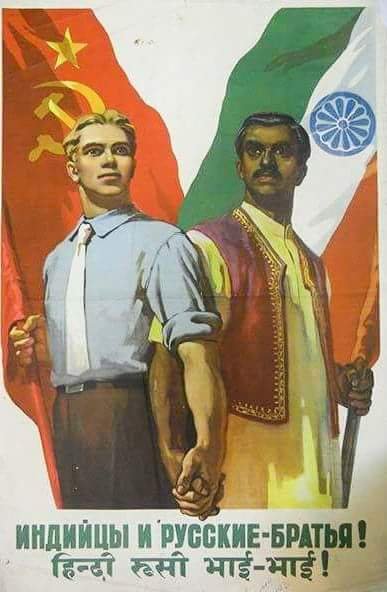
“A lot of Russians would say to me we used to watch Indian movies and our “dushas” they matched, and the dusha is the Russian word for ‘soul,’” explains Rajagopalan, “So the dusha that the Russians like to talk about their soul is one that endures — it has been through hard histories but […] it’s resilient it’s kind of spiritual in that sense of not being attached to material pursuits.”
Video Killed the Bollywood Star
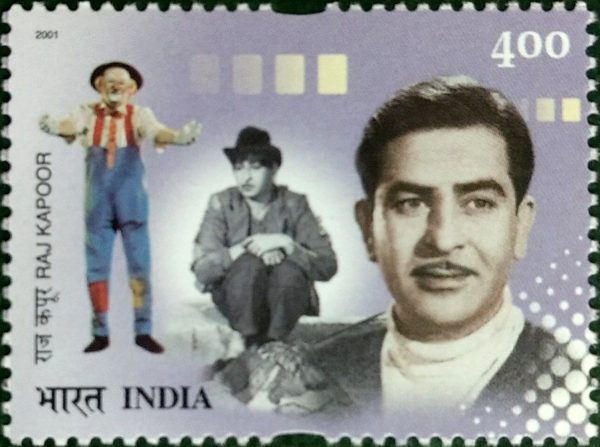
Bollywood films played on theater screens in the USSR right up until the later years of the Soviet Union, but by the 1980s, a new technology changed this special cinematic relationship forever. With the proliferation of the VCR and VHS, Soviet audiences had more control over what they could watch — and what they wanted to watch were bootleg Hollywood films. “The end of the Soviet Union coincided with the new era of VHS,” says Anton Seyduzov, “and that’s exactly when Arnold and Stallone completely removed Raj Kapoor and other Indian actresses from the screens of ordinary Soviet audiences.”
In the final years of the USSR rather than watching Shree 420 or Seeta and Geeta, a lot of people preferred watching bootleg videos of Conan the Barbarian and Rambo. And when the Soviet Union collapsed, American film and television quickly flooded the market. But Bollywood isn’t totally gone. There’s still a channel on Russian TV that broadcasts Indian movies and television shows 24 hours a day. And Awaara is still a classic in many parts of the former Soviet Union.
A Different Kind of Exchange
Given the fact that this cinematic relationship was supposed to be a 1-1 exchange between India and the Soviet Union, one would expect that Soviet films would be just as popular in India. That wasn’t the case at all. “We never watched any Russian film in India in those in those years,” remembers Deepa Bhasthi.
Unlike Indian films, which were widely beloved in all parts of the USSR, Soviet films were just not popular in India. Indian movie theaters weren’t great at distributing Soviet movies, and when they did, they often screened them late at night when no one would even want to go see a movie. Soviet films just didn’t have the same mainstream appeal as Indian films did in the USSR.
But even though Soviet film never really took off in India, the goal of a two-way cultural exchange wasn’t a total failure, it just took another form. The USSR made Soviet literature widely available all over India. Russian classics, science and technology books, children’s books, and textbooks were translated in multiple Indian languages and available at incredibly low prices. “There were several generations of Indians who grew up on these books,” says Deepa Bhasthi, “We had everything from Tolstoy, Pushkin, Dostoevsky — all the greats of Russian literature.”
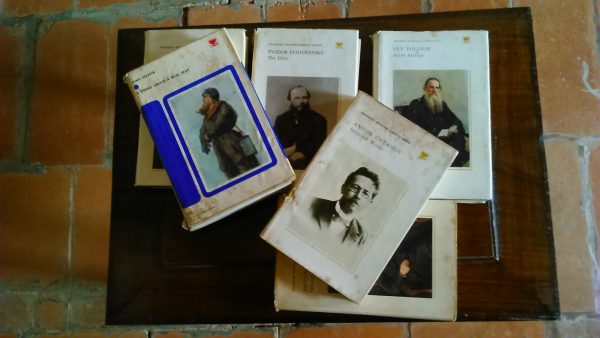
Deepa Bhasthi grew up and became a writer, and she believes she owes a lot to growing up surrounded by Russian literature. And although the original intention behind getting Soviet literature in India or Indian films into the Soviet Union was a form of propaganda, Bhasthi says she doesn’t see it that way. “It was literature for itself to be enjoyed because it has great writing. I don’t think anyone’s going to […] remember a politician’s speech, but you talk about books or you talk about cinema, you talk about music and that stays with you possibly for the rest of your life.”
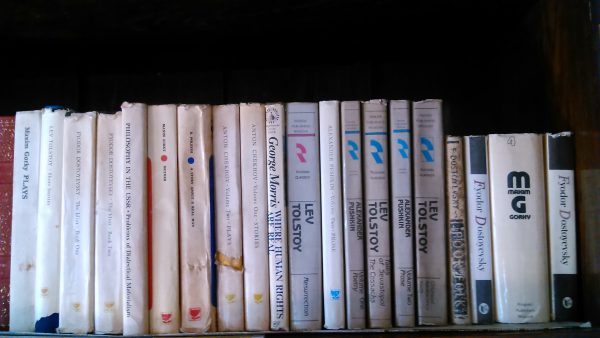
Special thanks to Jessica Bachman who is the organizer of the Bollywood and Bolsheviks oral history project, and to Deepa Bhasthi.
Read more about the bootleg video vans of the Soviet Union from the coda in Elmar Hashimov’s Atlantic article here.



Comments (9)
Share
To this days, American films in Poland are still translated (not dubbed) like the clip of the Russian movie in the episode. You’d think someone would make proper dubbings.
I actually prefer this voice over to dubbing. Dubbed movies and TV series, especially badly dubbed ones (so a majority on TV) sound extremely awkward. And the connection between actors’ voices and the sounds of their surroundings is very hard to replicate. Every time I went abroad as a kid [to countries with dubbed movies] it struck me how unnatural and weird this foreign TV is :)
Loved this episode.
Growing up in Mumbai in the 1980s we definitely had a lot of Soviet science books. I remember one quite vividly called ‘Flying Trains’ by Mir Publishers that had a lot of the science (and complex equations) for MagLev train systems.
When I moved to the USA in the early 2000s, I definitely had Russian cab drivers sing me Bollywood songs, which shocked me as I had no idea Bollywood was so popular there.
If you like the outlandish grassroots Russian voiceovers of bootleg Hollywood blockbusters, you’re going to love this:
In Poland in the 90s, there was a huge bootleg market for computer games. They were usually sold on bazaars and often by people from the former USSR.
Some of these games were actually translated AND dubbed by Russians/Belarussians/Ukrainians to… err… something like a hilarious, half-baked version of Polish read with this strong, signature ‘russian spy in a hollywood movie’ accent.
I still have Age of Empires and Commandos translated this way. It’s triple the fun :D
I loved this episode! It is the quirky and esoteric details that I love about this podcast. What is the music behind Sudha Rajagopalan around 15:40? What she says is so beautiful… and “an unbridle sense that there are no boundaries to what you can feel and how you can express those feelings…”
Thank you! We love it too! The music is an original piece by our brilliant composer, Sean Real.
I actually HAVE watched Tarkovsky’s Stalker at midnight. I found it captivating and couldn’t sleep afterward.
To see the Soviet cultural exchange programme solely as a geopolitical maneuever or attempt to mysteriously “influence” the Indian society is missing the ideological basis of such actions. No matter how thick the layers of anti-Soviet propaganda remains in the US and the West in general, three decades into the fall of the USSR, its legacy as a champion for universal education, public health and social housing shines through. This was the ideology that poor, underserved and overexploited masses have the right to cheap books, education and healthcare. That’s why instead of building McDonald’s Soviets were sending books to countries like India. Calling this a geopolitical game, is like calling Gutenberg a member of Politburo. Well yes, sure, if you prefer to call it that.
As Elmar Hashimov may probably attest, social and cultural achievements of Soviet Union (in Azerbaijan, but also in many other Soviet republics) stands in stark contrast with the cultural degradation and incredible inequality that replaced it in many post-Soviet countries. And finally, unlike what was claimed in the episode, Soviet cinema did indeed produce masterpieces during Stalin’s time (for instance, see the Azeri film called New Horizons (1940) — Yeni Horizont in Azerbaijani), albeit lower in number, for obvious reasons.
Thank you, for the post-episode “from bombay with love”
I grew up in Mumbai and i like subtopic Bollywood-mania, Video Killed the Bollywood Star. it is detailed and well-focused.